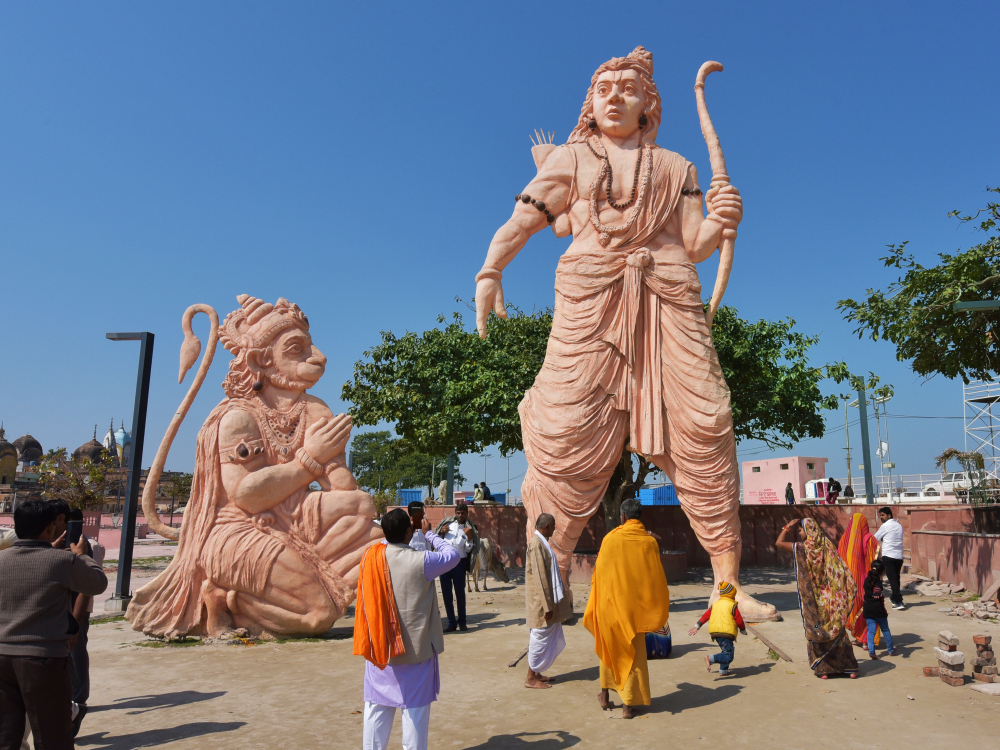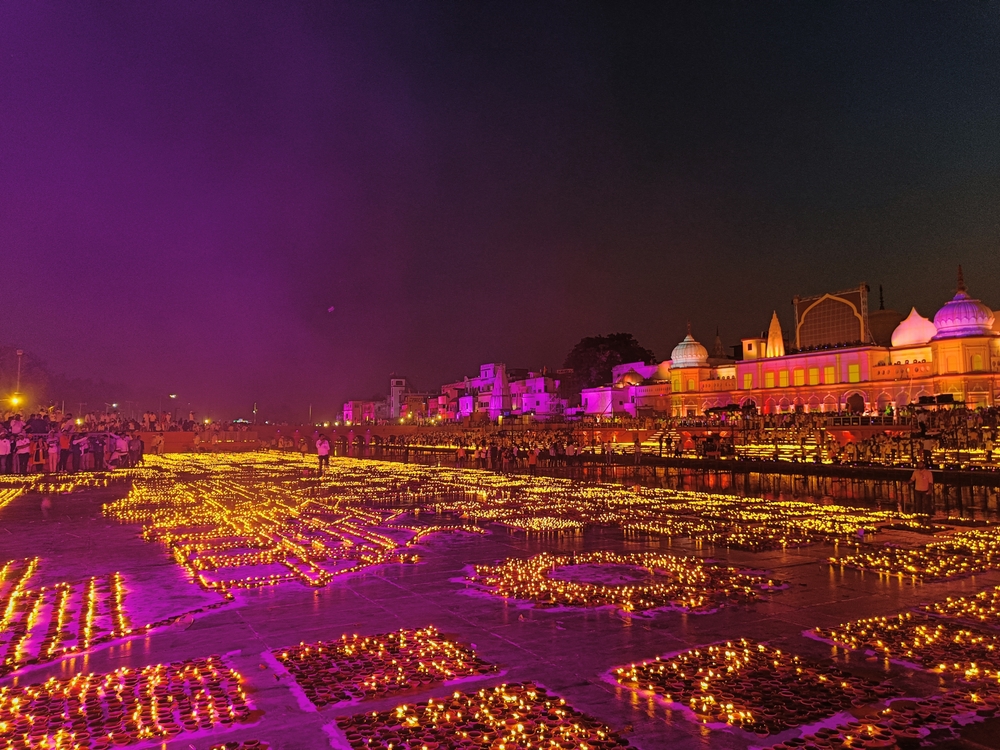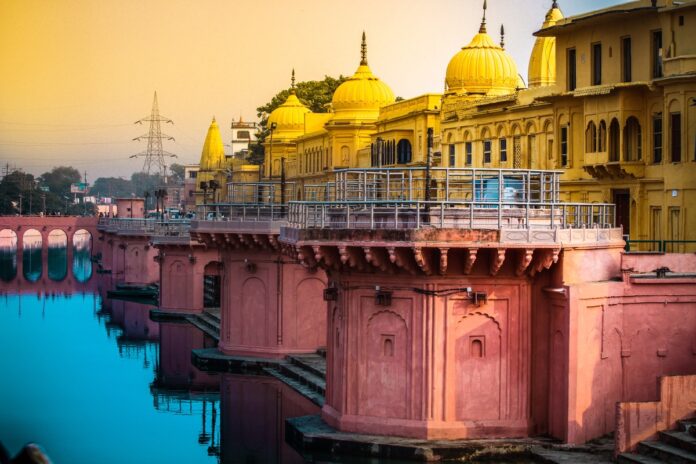The Ayodhya Ram Mandir, a highly anticipated and historically significant religious site, is set to open its doors to devotees. Explore the temple’s rich history, and its opening date, and discover the best ways to reach this sacred destination for a profound spiritual experience.
Also Read: Ayodhya Ram Mandir Location: Best Routes and How to Reach
Ayodhya Ram Mandir History
The history of the Ayodhya Ram Mandir is a tale of devotion, controversy, and resilience that spans centuries. With its roots deeply entrenched in Hindu mythology, the temple has undergone various phases, marked by significant events and developments.
Ancient Origins
- Mythological Significance: The Ayodhya Ram Mandir is believed to be the birthplace of Lord Rama, a revered deity in Hinduism. According to the epic Ramayana, Ayodhya is where Rama was born, making it a sacred site.
The Original Temple
- 12th Century Construction: The original temple, dedicated to Lord Rama, is said to have been constructed in the 12th century under the patronage of King Raja Dashrath, as per historical records.
Babri Masjid Controversy
- 16th Century: The construction of the Babri Masjid in the 16th century at the same site led to a long-standing religious and legal dispute. It became a flashpoint for Hindu-Muslim tensions over the centuries.

Ayodhya Verdict
- Landmark Supreme Court Decision (2019): In a historic judgment, the Supreme Court of India ruled in favor of the construction of the Ram Mandir at the disputed site. This decision marked a turning point in the temple’s history.
Temple Reconstruction
- Laying of Foundation Stone (2020): The foundation stone for the Ayodhya Ram Mandir was laid in a grand ceremony attended by dignitaries and religious leaders. The construction of the magnificent temple is now underway.
Symbol of Unity
- A Universal Symbol: The Ayodhya Ram Mandir serves as a symbol of religious unity and harmony. It signifies the culmination of a long-standing dispute and the beginning of a new era in Ayodhya’s history.
The Ayodhya Ram Mandir temple history is a testament to the enduring faith of millions and the power of legal decisions to shape the course of religious sites in India. Its construction represents a historic moment in the ongoing narrative of this sacred place.

Ayodhya Ram Mandir Opening Date
The projected Ayodhya Ram Mandir completion date is January 22, 2024, aligning with the anticipated timeline of the Ayodhya Ram Mandir construction company involved in the project. The responsibility for constructing this grand temple lies with Larsen & Toubro group, and the estimated Ram Mandir budget is Rs 18,000 crore.
Ayodhya Ram Mandir Architecture
The Ayodhya Ram Mandir’s architecture is a reflection of grandeur, intricate design, and deep spiritual symbolism. The temple is being constructed with meticulous attention to detail, combining traditional and contemporary architectural elements. Here are some key features of the Ayodhya Ram Mandir’s architecture:
- Nagara Style Architecture: The temple is designed in the Nagara style of temple architecture, which is characterized by its tall and curvilinear shikharas (spires).
- Magnificent Shikharas: The central spire, known as the shikhara, is the most prominent feature of the temple. It rises to a considerable height and is adorned with intricate carvings and sculptures.
- Mandapa and Garbhagriha: The temple complex includes a spacious mandapa (hall) and a garbhagriha (sanctum sanctorum). The garbhagriha houses the main deity, Lord Rama, and is the most sacred part of the temple.
- Carvings and Sculptures: The temple is adorned with finely detailed carvings and sculptures depicting scenes from the Ramayana, Hindu gods and goddesses, and various motifs that hold religious significance.
- Marble and Sandstone: The construction materials include both white marble and red sandstone. The combination of these materials enhances the temple’s aesthetic appeal.
- Sculpted Pillars: The temple features intricately sculpted pillars that showcase the skills of artisans and craftsmen who have dedicated themselves to this project.
- Gopurams: The entrance gates and gopurams (towered gateways) are intricately designed and add to the visual grandeur of the temple complex.
- Vastu Shastra: The temple’s design adheres to the principles of Vastu Shastra, an ancient Indian architectural science that seeks to harmonize the temple’s energy and align it with cosmic principles.
- Ablution Chambers: The temple complex includes facilities for rituals and ablutions as well as spaces for devotees to participate in religious ceremonies.
- Surrounding Gardens: The temple complex will feature beautifully landscaped gardens, providing a serene and tranquil environment for devotees and visitors.
The Ayodhya Ram Mandir’s architecture not only pays homage to the rich heritage of Indian temple design but also stands as a testament to the devotion of millions of people who have contributed to its construction. The completion of this magnificent temple is eagerly awaited by devotees and is set to be a landmark of cultural and religious significance in India.
Ayodhya Ram Mandir Which State
Ayodhya, the city associated with the birthplace of Lord Rama (Ram Janmabhoomi) , is located in the state of Uttar Pradesh in India. The Ram Mandir (temple) being constructed in Ayodhya is dedicated to Lord Ram and is a prominent project in the city.

How to Reach Ayodhya Ram Mandir
Reaching the Ayodhya Ram Mandir is relatively easy, and the city of Ayodhya is well-connected by road, rail, and air. Here’s how to reach the Ayodhya Ram Mandir:
By Air:
Lucknow Airport: The nearest major airport is Chaudhary Charan Singh International Airport in Lucknow, which is approximately 140 kilometers (87 miles) from Ayodhya. From the airport, you can hire a taxi or take a bus to Ayodhya.
By Train:
Ayodhya Ram Mandir Nearest Railway Station: Ayodhya has its railway station, Ayodhya Junction. It is well connected to major cities in India. You can check the train schedule and book your tickets to Ayodhya from various cities. Ayodhya railway station to Ram Mandir distance is around 800m.
By Road:
From Lucknow: Lucknow to Ayodhya distance is around 140 kilometers (87 miles). You can drive or take a bus from Lucknow to Ayodhya.
From Varanasi: Varanasi to Ayodhya is approximately 200 kilometers (124 miles). You can travel by road, either by bus or taxi.
From Gorakhpur: Gorakhpur to Ayodhya distance is about 130 kilometers (81 miles) away from Ayodhya, and you can take a bus or hire a taxi to reach Ayodhya.
By Private Vehicle: If you’re traveling in your vehicle, you can use GPS navigation to reach Ayodhya. The town is well-connected by road, and there are ample parking facilities.
Once you arrive in Ayodhya, you can easily navigate your way to the Ayodhya Ram Mandir by asking locals for directions or using navigation apps. The temple is located in the heart of the city and is a prominent landmark. Also, UPSRTC runs regular bus services to Ayodhya from all the nearby cities. You can easily book your bus tickets on AbhiBus and have a hassle-free journey.





